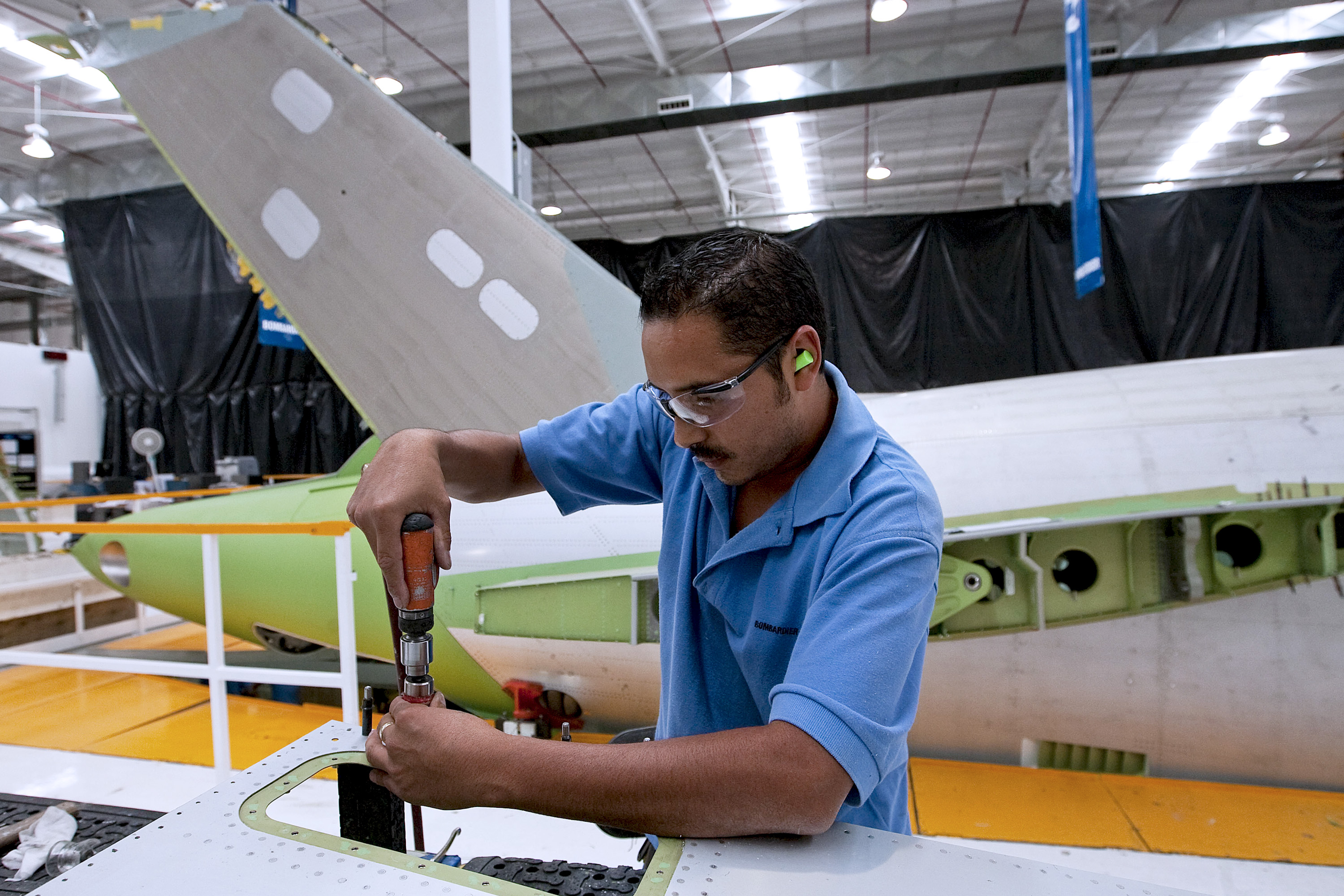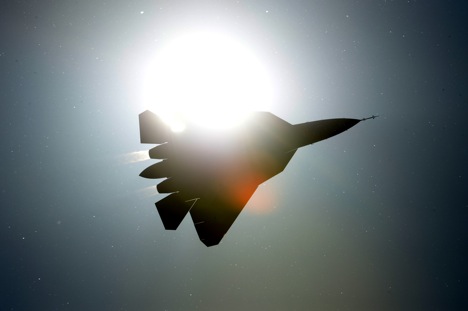India’s indigenous AMCA is set to fly on Russian technology

India is increasingly looking to localise production of aircraft. Source: Getty Images
Even as India and Russia sort out the issues facing the PAK-FA, there are suggestions from certain quarters that the Indian Air Force should look elsewhere for its future stealth fighter. This is ironic, considering that India’s indigenous Advanced Medium Combat Aircraft (AMCA) is set to fly on technology developed in Russia.
K. Tamilmani, Chief Controller R&D (Aero) of the Defence Research & Development Organisation (DRDO), says India has the basic technologies but Russia is cooperating in critical areas such as thrust vectoring.
Bangalore-based Aeronautical Development Agency – which designed the Tejas warplane – had in 2015 asked for Russian assistance in getting the AMCA off the ground. Following a government to government memorandum, a number of Russian companies agreed to help out in the stealth aircraft project. The most significant partnership is between Klimov and the Gas Turbine Research Establishment (GTRE) to develop three-dimensional thrust vectoring for the AMCA’s engines.
Other partnerships include a joint venture between the Electronics & Radar Development Establishment (LRDE) with the Tikhomirov Scientific Research Institute of Instrument Design for the development of an active electronically scanned array or AESA radar, and between ADA and Sukhoi for stealth and related technologies.
The ADA has a long wishlist. It pitches the AMCA as one of the world’s top dogfight dukes, boasting “extended detection range and targeting, supersonic persistence and high speed weapon release”. Close-combat operations will be facilitated by “high angle of attack capability, low infrared signature and all round missile warning system.”
A key Russian influence is supermanoeuvrability, which is defined as the ability of an aircraft to fly extreme manoeuvres such as Pugachev’s Cobra. Even the American F-35 stealth jet – which has swallowed $1 trillion during development – does not have supermanoeuvrability. It is an indication that the ADA is aiming for a truly world class fighter.
Tamilmani says “four prototypes are expected in 2019”. That may sound overly optimistic – especially in the backdrop of stealth fighter programmes in the U.S., Russia and South Korea experiencing developmental issues. However, it is also a pointer to the Indian defence establishment’s confidence in its ability to develop an entire weapons platform from scratch after the success of the Tejas Light Combat Aircraft.
Different planes, different roles
Sukhoi’s PAK-FA (Perspektivnyi Aviatsionnyi Kompleks Frontovoi Aviatsyi or Future Air Complex for Tactical Air Forces) is intended to be an air superiority warplane, with ground attack and reconnaissance being secondary missions. Known as the Fifth Generation Fighter Aircraft (FGFA) in India, it is a heavy aircraft that will perform the same role as the IAF’s Su-30MKI “air dominance” fighter.
On the other hand, the AMCA is aimed at replacing much smaller ground attack jets such as the Mirage-2000, Jaguar and Mig-27. The IAF will always have a need for a mix of aircraft, including large, medium and small jets for a variety of combat roles. Therefore, replacing the FGFA with the AMCA makes no sense at all.
Why is the FGFA important?
India has a steep learning curve in stealth fighter development. In this backdrop, the knowledge gained from the FGFA will help India in the indigenous AMCA.
To be sure, Indian scientists haven’t gained much hands-on experience in the project because the PAK-FA T-50 is a fairly mature aircraft for India to get substantial work share. In fact, Hindustan Aeronautics Ltd (HAL) – which initially hoped to get some development work from Sukhoi – has surrendered much of its quota of work.
While the T-50 may be far down the developmental path, the Russian side insists the FGFA is a different bird meant for Indian skies. “This is an entirely new project for building a new aircraft,” says Viktor N. Kladov, Director, International Cooperation, Rostec, Russia’s largest state holding company in the defence sector.
Even if the Indian role in the FFGA project remains confined to customisation – rather than joint development – it could still turn out to be valuable exposure for Indian scientists. Here one needs to look at the substantial Indian contribution to the Su-30 Flanker programme. The Indian MKI version of the jet is now the most advanced Flanker in the world, with the Russian Air Force also going in for the same standard. Customisation, therefore, shouldn’t be sneezed at.
Synergies in FGFA and AMCA
When India and Russia inked the FGFA deal in December 2011, HAL had only 15 per cent of the work share but was paying 50 per cent of the development cost. But India’s share in research-and-development was limited by its domestic industrial capabilities. The country had no expertise in stealth, which has taxed the world’s leading armament companies.
However, India’s work share will gradually increase as local engineers and scientists gain experience in the concurrent AMCA and FGFA projects. According to Igor Korotchenko, head of the Moscow-based Centre for Analysis of Global Arms Trade, “Russia will certainly provide all necessary knowledge and logistics support to Indian specialists, but developing skills and acquiring experience in design and development of advanced fighter aircraft takes a long time and substantial effort.”
At Aero India 2017 in Bangalore, Defence Minister Manohar Parikkar said that the vexing issues in the FGFA were being sorted out. “There are some issues to be addressed in terms of manufacturing, how it will be exported after the project is completed and what approvals will be required,” he said.
The Defence Ministry has constituted a team to look into the various aspects of the FGFA and it is likely to submit its report within a month after which things would be finalised. A three-star officer is heading the panel.
Until the Tejas arrived, India had lacked a locally built jet fighter since the 1970s when it had the Marut and Gnat/Ajeet. Both were excellent fighters – especially the Gnat, which was a scare word in the Pakistan Air Force – but were retired quickly because the IAF wanted to only import foreign fighters. India thus lost development continuity. This blunder must not be repeated because airpower in the 21st century will reflect India’s manufacturing strength. With warplanes growing in complexity and costs, and hostile stealth aircraft about to debut in India’s neighbourhood, imports are certainly not an option.
Rakesh Krishnan Simha is a New Zealand-based journalist and foreign affairs analyst.
Views expressed are personal.
Read more articles by Rakesh Simha here.
If using any of Russia Beyond's content, partly or in full, always provide an active hyperlink to the original material.
Subscribe
to our newsletter!
Get the week's best stories straight to your inbox


